California Proposition 65 restricts heavy metals, phthalates, and other substances in consumer products sold in California. it also sets warning label requirements.
In this guide, we explain what importers, manufacturers, and Amazon sellers must know about restricted substances, warning labeling, lab testing, and compliance risks.
Content Overview

FREE CONSULTATION CALL (US, EU & UK)
- Request a free 30-minute call with Ivan Malloci to learn how we can help you with:
- Find product requirements
- Certification and labeling
- Lab testing
What is California Proposition 65?
California Proposition 65, also known as the Safe Drinking Water and Toxic Enforcement Act of 1986, is a state regulation in California that covers consumer products. It aims to protect Californians from harm caused by exposure to certain types of chemical substances, and it mainly prohibits:
a. The unrestricted use of listed chemicals in consumer products, without using the appropriate warnings.
b. The intentional discharge of listed substances into sources of drinking water.
The California Office of Environmental Health Hazard Assessment (OEHHA) administers California Proposition 65, and periodically updates the list of chemicals that can cause the following health issues in humans:
- Cancer
- Developmental diseases
- Female or male reproductive problems
The Proposition 65 List currently includes more than 900 chemicals.

Which products must comply with California Proposition 65?
There are many products that must comply with the California Proposition 65 requirements. Below, we provide several examples.
a. Food contact materials – May contain BPA in coatings, and phthalates (e.g. DEHP) in plastic components, for example.
b. Apparel – May contain PFOA in flame retardants for textile products, and other restricted substances.
c. Jewelry – May contain toxic substances such as lead and cadmium.
d. Toys and childcare articles – May contain phthalates (e.g. DEHP, DINP) in plastic components, and other restricted substances.
e. Electronics – May contain heavy metals (e.g. lead) and other listed substances.
f. Furniture – May contain phthalates in plastic furniture, formaldehyde in plywood, and antimony in trioxide in flame retardants for upholstered furniture.
g. Holiday lights – May contain lead and phthalates in the PVC-coated wires.
h. Motor vehicle parts – May contain lead in lead-acid batteries, phthalates in seat covers, and asbestos in brake pads.
i. Recreational boats and other pleasure craft – May contain carbon monoxide, and lead in brass railings and steering wheels.
You can find more examples of covered products on this page.
Are any products or businesses exempt?
California Proposition 65 generally exempts from the warning requirement and discharge prohibition the following:
- Businesses having fewer than 10 employees
- Governmental agencies
- Public water systems
However, note that the regulation might be relevant also for businesses that employ less than 10 people. As an example, if you are importing consumer products to resell them to retailers or other companies that might have 10 employees or more, practically speaking, you might still have to comply, even if you only have 2 employees.
Which substances are covered by California Proposition 65?
California Proposition 65 regulates both naturally-occurring and synthetic chemicals added to consumer products that can cause health issues for humans.
Specifically, it has established a mechanism called “Safe Harbor Levels” to the maximum exposure limit of listed substances. There are two kinds of substance levels:
a. No Significant Risk Levels (NSRLs), for chemicals that might cause cancer.
b. Maximum Allowable Dose Levels (MADLs), for chemicals that might result in reproductive problems.
Definition of NSRL
Title 27 Section 25705 of the California Code of Regulations defines the “No Significant Risk Level (NSRL)” as the daily intake level that could cause a 0.00001% risk of cancer through lifetime exposure.
The NSRL value of each listed substance is calculated through scientific research and risk assessments. The OEHHA releases scientific reports revealing the methodologies and findings for some of the listed chemicals.
For example, in this report, you can find a summary of the findings for benzene.
Definition of MADL
Title 27 Section 25801 of the California Code of Regulations defines the “Maximum Allowable Dose Level (MADL)” as the daily level of exposure to a chemical that is toxic for reproduction having no observable damaging effect when multiplied by 1,000.
You can find an example of a calculation concerning sodium dimethyldithiocarbamate in this report.
Examples of restricted substances
In the table below, we provide some examples of substances on the Proposition 65 List, their NSRL and MADL limits, and examples of products that might contain these substances.
| Substance | NSRL (μg/day) | MADL (μg/day) | Product examples |
| Arsenic (Inorganic) | 10 μg/day (except via inhalation)
0.06 μg/day (inhalation) |
N/A | 1. Preservative-treated outdoor furniture
2. Plant crops (e.g., rice) 3. Seaweed (esp. hijiki) 4. Herbal remedies |
| Bisphenol A | N/A | 3 μg/day (dermal exposure from solid materials) | 1. Bottle caps
2. Water dispenser jugs 3. Electric kettles 4. Baby bottles 5. Plastic food wrap 6. Thermal paper (e.g., ATM receipts) |
| Butyl Benzyl Phthalate (BBP) | N/A | 1,200 μg/day (oral) | 1. Vinyl flooring
2. Sealants 3. Paints 4. Handbags 5. Belts 6. Footwear |
| Cadmium and Cadmium Compounds | 0.05 μg/day (inhalation) | 4.1 μg/day (oral) | 1. Rechargeable NiCad batteries
2. Cameras 3. Cell phones 4. Electric cars 5. Jewelry charms for children |
| Chromium (Hexavalent Compounds) | 0.001 μg/day (inhalation) | 8.2 μg/day (oral) | 1. Pigments for textile dyes, paints, and inks
2. Pigments for inks 3. Wood preservatives 4. Some leather goods 5. Cement |
| Lead and Lead Compounds | 15 μg/day (oral) | 0.5 μg/day | 1. Baby bibs
2. Toys 3. Ceramics pottery 4. Glassware 5. Cosmetics 6. Batteries |
| Di(2-ethylhexyl) phthalate (DEHP) | 310 μg/day (adult) | Intravenous:
a. 4,200 μg/day (adult) b. 600 μg/day (infant boys, 29 days to 24 months) c. 210 μg/day (neonatal infant boys, age 0 to 28 days) Oral: a. 410 μg/day (adult) b. 58 μg/day (infant boys, age 29 days to 24 months) c. 20 μg/day (neonatal infant boys, age 0 to 28 days) |
1. Shower curtains
2. Furniture 3. Garden hoses 4. Wire and cable coverings 5. Plastic food packaging materials 6. Toys and child care articles |
| Diisononyl Phthalate (DINP) | 146 μg/day | N/A | 1. PVC flooring
2. Wire and cable insulation 3. Gloves 4. Shoes 5. Adhesives 6. Sealants |
| Di-n-hexyl Phthalate (DnHP) | N/A | 2,200 μg/day | 1. Some plastics
2. Some vinyl products |
| Di-n-butyl Phthalate (DBP) | N/A | 8.7 μg/day | 1. Gloves
2. Shoes 3. Personal care products 4. Wire and cable insulation 5. Fragrances 6. Nail polish |
| Di-isodecyl Phthalate (DIDP) | N/A | 2,200 μg/day | 1. PVC tubing
2. Garden hoses 3. Raincoats 4. Tile flooring 5. Storage cases 6. Shower curtains |
Warning Labeling Requirements
Businesses should affix a warning on a product label, or post or distribute it at a workplace or rental residences when they believe that they are exposing individuals to chemicals on the Proposition 65 List.
In practice, lab testing is usually required to ensure that chemical exposures for a given product remain at or below safe harbor levels. If this is the case, then businesses do not need to provide a warning on their products.
Label format and content
The California Proposition 65 warning consists of three main items:
- A warning symbol
- The word “WARNING”
- Warning statement
Warning symbol and text
The warning symbol must consist of a black exclamation point in a yellow or white triangle that has a bold, black outline.
Businesses must place the symbol to the left of the warning text and statement. The symbol’s size should match the height of the word “WARNING”.
The word “WARNING” must be in capital letters and in bold print.
Warning statement
There are different types of warning statements, which depend on whether the product may result in exposure to:
- Listed carcinogens
- Listed reproductive toxicants
- Both listed carcinogens and reproductive toxicants
- A chemical that is listed as both a listed carcinogen and reproductive toxicant
- A single chemical
Here is an example format of a warning statement regarding listed carcinogens in a product:
“WARNING: This product can expose you to chemicals including [name of one or more chemicals], which is [are] known to the State of California to cause cancer. For more information go to www.P65Warnings.ca.gov.”
You may also choose to provide a short-form warning on the label instead. In this case, the short-form warning regarding listed carcinogens in a product should read as follows:
“WARNING: Cancer – www.P65Warnings.ca.gov.”
Lab Testing
If you want to avoid placing a warning on your product, you must ensure that the products comply with California Proposition 65 requirements. As such, you must have your product tested to prove that it complies with relevant substance restrictions (e.g., NSRL, MADL).
If your product passes the relevant testing, you receive a test report that proves the product’s compliance with the requirements. In this case, you do not need to provide a warning.
Below, we list a few companies that provide California Proposition 65 testing services:
California Proposition 65 Requirements for Amazon Sellers
Amazon requires sellers to comply with California Proposition 65 requirements and label their products accordingly, when necessary.
The Amazon Seller Central contains a list of warning texts, according to the product category:
- Food
- Furniture
- Chemicals
- Alcoholic beverage
- Raw wood
- Passenger or off-road vehicle
- Recreational vessel
- Diesel engine
It also provides a tool and instructions for providing warnings when creating single or multiple listings in the platform. Below we provide an example of instructions for single listing.
Warning for single listing
1. Select “Add a Product” and click “Create a new product listing”.
2. Click on the “Compliance” tab.
3. Select the relevant warning type under the dropdown menu (e.g., “On Product Cancer”).
4. If necessary, select the associated California Proposition 65 Chemical Name(s).
Non-Compliance Penalties
If a product sold in California is found to contain one or more restricted chemicals above the Safe Harbor Levels without having the required warning label, the responsible party might be subject to a maximum penalty of USD 2,500 per violation per day.
Enforcement
The California Attorney General’s Office is primarily responsible for enforcing California Proposition 65.
However, the following parties in California may also enforce it:
a. Any district attorney.
b. Any city attorney for cities with populations exceeding 750,000 people.
c. Individuals who act in the public interest and bring legal action against a company they believe violates this law.
Compliance Risks
Products manufactured in China, Vietnam, and other countries are not California Proposition 65 compliant by default. On the contrary, manufacturers only ensure compliance with California Proposition 65 if explicitly instructed to do so – which in turn may require that they procure materials (e.g. fabrics or plastic granules) that are California Proposition 65 compliant.
Products made for other markets – without such strict substance regulations – may therefore contain amounts of lead, cadmium, phthalates, and other substances restricted by California Proposition 65.


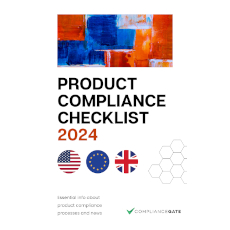
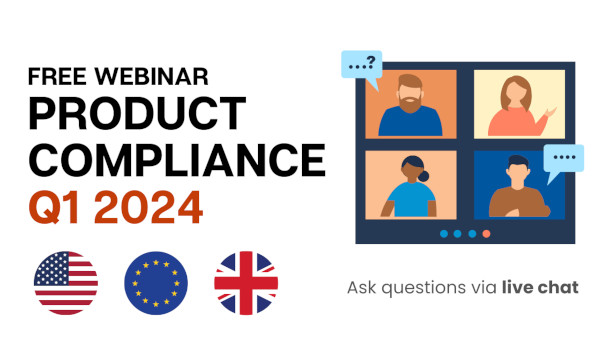
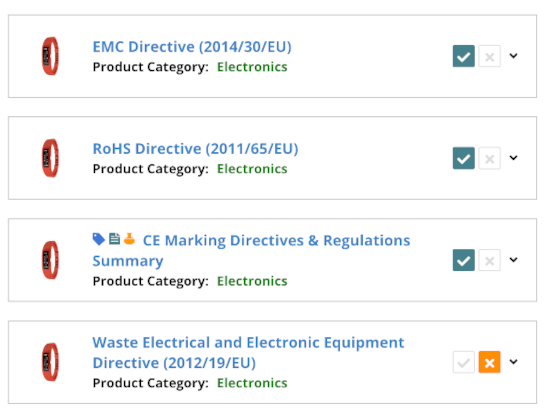




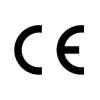
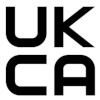








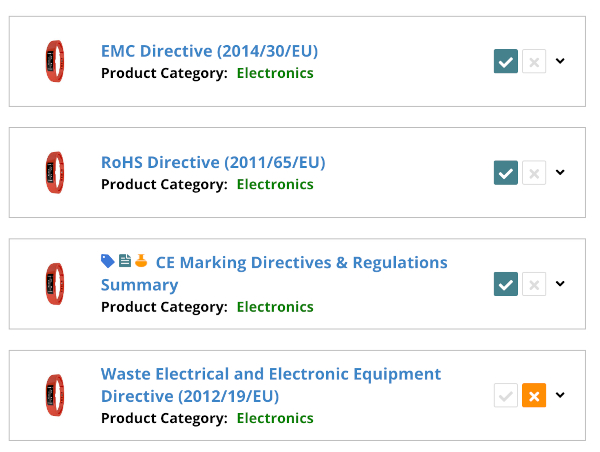

How do you remove the chemicals from the products? And why would California or the USA allow this to enter the country anyway?
Hello Edna,
I don’t think it’s possible to remove chemicals from a product. It’s a matter of using materials that don’t contain restricted or banned substances, above the limits, in the first place.